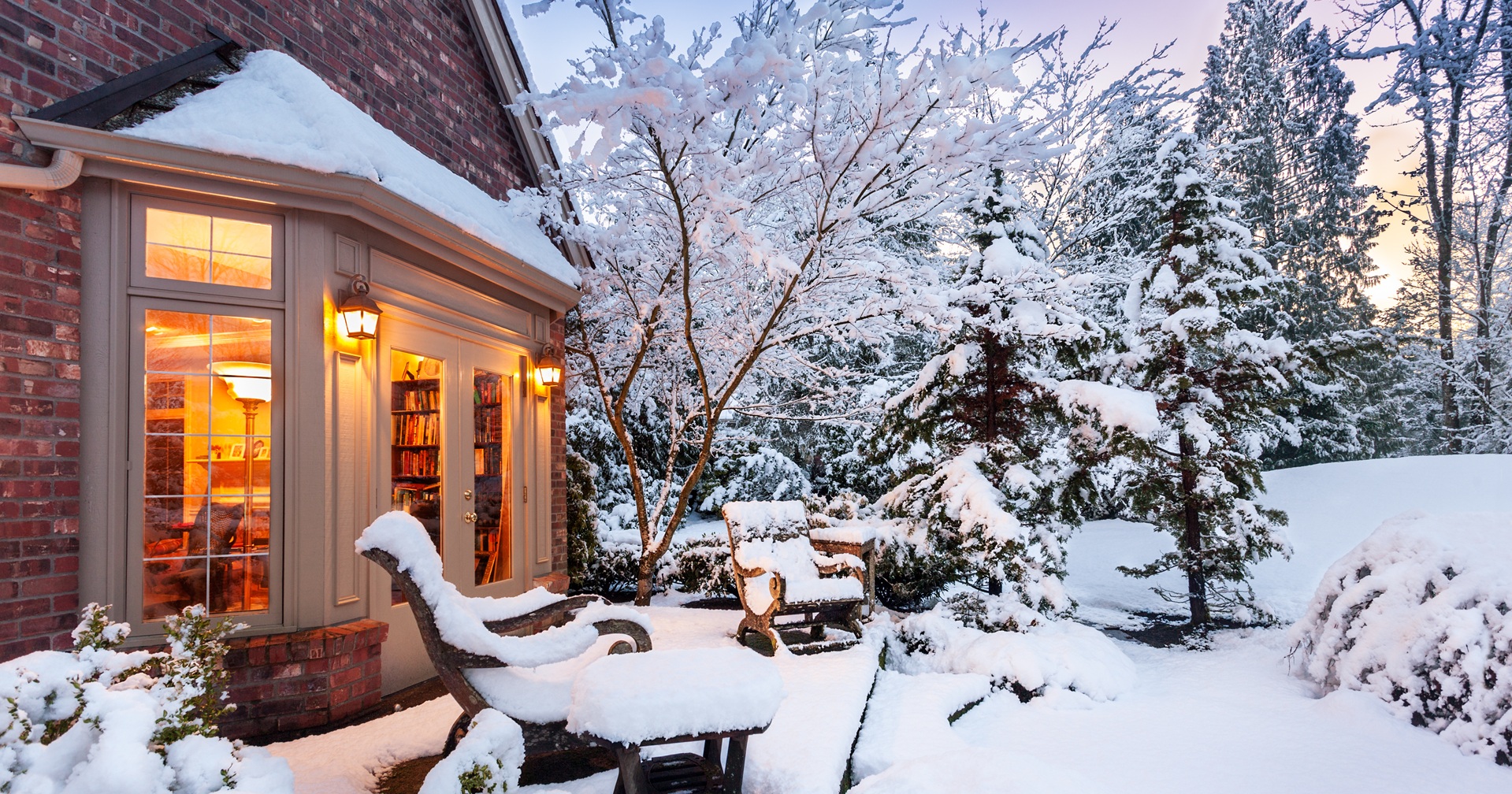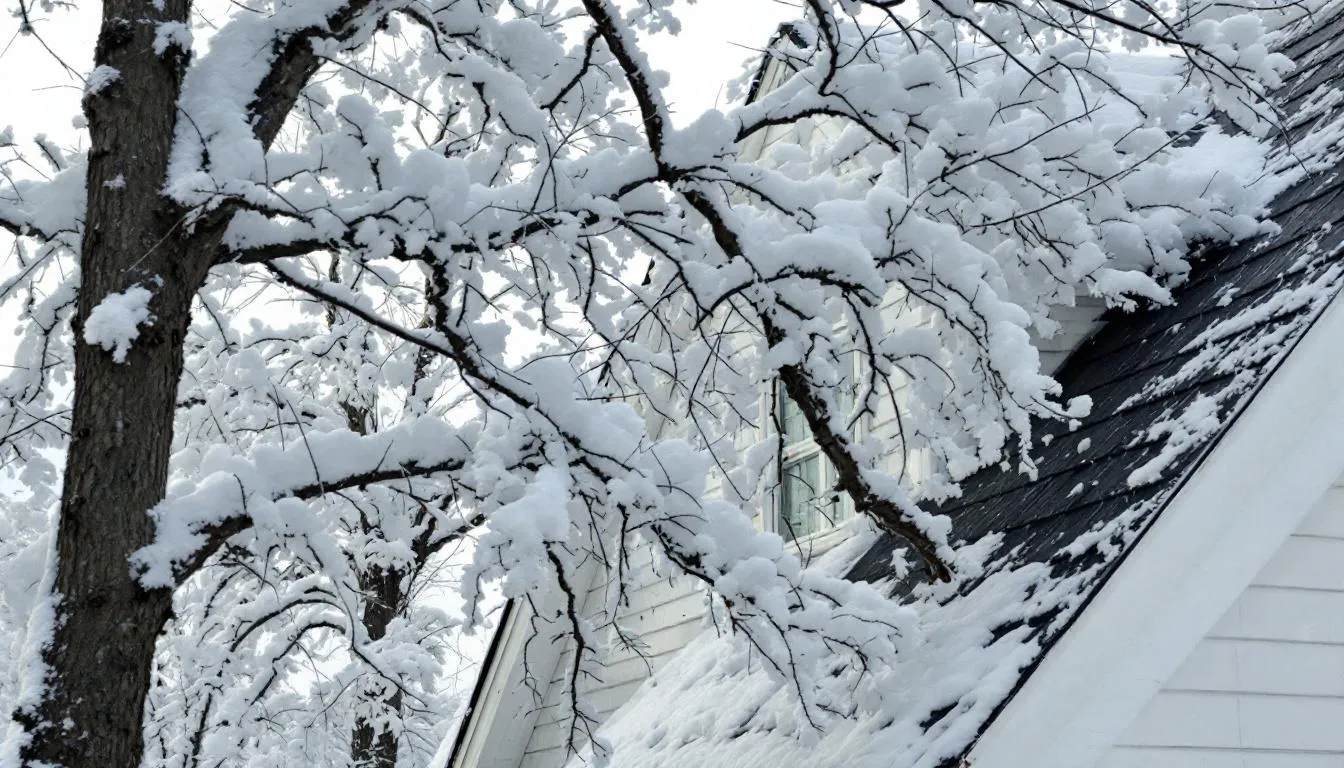
Winter weather can transform your peaceful home into a potential liability, with heavy snow creating risks that many homeowners don’t fully understand until it’s too late. When ice dams form along your roof edge or excessive snow threatens your home’s structure, knowing what your Homeowners insurance covers—and what it doesn’t—can save you thousands of dollars and significant stress.
The relationship between home insurance and snow damage isn’t as straightforward as many property owners assume. While your insurance policy likely provides coverage for many winter-related incidents, understanding the specific terms, coverage exceptions, and prevention strategies will help you protect both your property and your financial security when winter storms strike.
Quick Answer: Snow Damage Coverage
It depends on the type of Homeowners insurance you have.
An HO-1, or basic form, Homeowners insurance policy is a limited plan that does not cover damage from snow and ice, as it is not on the list of covered perils. These policies typically cover a specific list of 10 events, such as fire and theft, but exclude damage caused by the weight of ice, snow, or falling objects. As a result, if your home is damaged by snow, you would have to pay for repairs out-of-pocket.
If you have an HO-2 Homeowners insurance policy, which is a “named perils” policy, that does cover damage from the weight of ice, snow, or sleet, as this is one of the common perils listed in the policy. But coverage depends on your specific policy terms and the circumstances surrounding the damage.
What’s typically covered:
- Roof collapses from excessive snow weight (usually over 20-30 pounds per square foot)
- Structural damage from burst pipes caused by freezing temperatures
- Water damage from ice dam leaks penetrating your roof
- Personal property damage resulting from covered snow-related incidents
What’s generally not covered:
- Gradual damage from neglect or poor maintenance
- Snow removal costs from driveways, walkways, or rooftops
- Flooding from melting snow that enters at ground level
- Damage that could have been prevented with reasonable home upkeep
Most Homeowners insurance policies include deductibles ranging from $500 to $2,500, and coverage amounts depend on your dwelling coverage limits and the specific language in your insurance policy.

Types of Snow Damage That Are Covered
Roof Collapse and Structural Damage
Homeowners insurance coverage typically includes protection against roof collapse when the weight of snow and ice exceeds your roof’s structural capacity. Most policies cover this scenario because it represents sudden, accidental damage rather than gradual deterioration.
Specific coverage includes:
- Roof collapse from snow loads typically exceeding 20-30 pounds per square foot
- Structural damage to walls, ceilings, and support beams caused by excessive snow
- Damage to personal belongings inside the home from roof collapse
- Emergency repairs needed to secure the property after sudden collapse
Your insurance provider will generally pay for repair damage to restore your home’s structural integrity, minus your deductible. However, the roof must have been in reasonable condition before the snow event—pre-existing structural problems that contributed to the collapse may result in claim denials.
Frozen Pipe Damage
Winter weather creates significant risks for your home’s plumbing system, and most Homeowners insurance policies provide coverage when frozen pipes lead to water damage. This protection extends beyond just the pipes themselves to include the resulting property damage.
Coverage typically includes:
- Water damage from burst pipes that freeze during frigid temperatures below 32°F
- Repair costs for damaged flooring, walls, furniture, and electronics from pipe bursts
- Plumbing system repairs and water restoration services
- Additional living expenses if your home becomes uninhabitable due to water damage
Insurance companies expect homeowners to maintain adequate heating (typically above 55°F) when away from home during winter months. Failure to maintain reasonable temperatures may be considered homeowner negligence, potentially voiding coverage for frozen pipe incidents.
Ice Dam Water Damage
Ice dams form when snow melts on warm roof sections and refreezes at colder edges, creating barriers that prevent proper water drainage. When water backs up behind these ice formations, it can infiltrate your roof and cause significant interior damage.
Covered damage includes:
- Water infiltration through roof leaks caused by ice dam backup
- Interior ceiling and wall damage from melting ice entering through the roof
- Damage to insulation and electrical systems from ice dam water leaks
- Personal property damage from water entering living spaces
While Homeowners insurance cover damage resulting from ice dams, the policies typically exclude the cost of ice dam removal itself. This means you’ll pay out-of-pocket for professional ice dam removal services, but your insurance will cover the water damage that results from the ice buildup.

Snow Damage That’s NOT Covered
Gradual Damage and Maintenance Issues
Standard homeowners policy language specifically excludes damage that occurs gradually over time or results from inadequate property maintenance. These exclusions protect insurance companies from covering predictable wear and tear that property owners should address through regular upkeep.
Excluded damage includes:
- Damage from gradual snow and ice buildup over weeks or months
- Roof damage from poor maintenance like clogged gutters or missing shingles
- Damage that could have been prevented with reasonable home upkeep
- Snow removal costs from driveways, walkways, or rooftops
Insurance adjusters investigate claims carefully to distinguish between sudden accidents and gradual deterioration. If they determine that clearing gutters, trimming trees, or other maintenance could have prevented the damage, your claim will likely be denied. Documentation of regular maintenance can help support legitimate claims.
Flooding from Snowmelt
One of the most significant coverage gaps in Homeowners insurance policies involves flooding from snowmelt. When rapid warming causes snow to melt faster than the ground can absorb it, the resulting surface water is classified as flooding—specifically excluded from standard Homeowners insurance.
Flood-related exclusions include:
- Ground flooding from rapid snowmelt that enters basements or crawl spaces
- Surface water damage that requires separate flood insurance through FEMA
- Sewer backup from snowmelt overwhelming municipal systems
- Foundation damage from freeze-thaw cycles affecting soil around your home
Property owners in areas prone to snowmelt flooding should consider purchasing separate Flood insurance policies. These policies typically have a 30-day waiting period before coverage begins, so advance planning is essential.
Special Considerations and Policy Limits
Understanding the specific terms and limitations in your home insurance policy helps set realistic expectations when winter storms threaten your property. Different insurance policies contain varying coverage limits, deductibles, and special provisions that affect your protection.
Key policy considerations:
|
Coverage Element
|
Typical Limits
|
Important Notes
|
|---|---|---|
|
Winter storm deductibles
|
$500 to $2,500
|
May be higher in snow-prone areas
|
|
Other structures coverage
|
10% of dwelling coverage
|
Covers detached garages, sheds, fencing
|
|
Additional living expenses
|
20% of dwelling coverage
|
Temporary housing during repairs
|
|
Tree removal
|
$500 to $1,000 per incident
|
Only when trees damage covered structures
|
Some insurance policies include specific provisions for winter weather that may affect your coverage. For example, certain policies exclude coverage if your home remains vacant for more than 30 days during winter months without maintaining adequate heat. This provision prevents coverage for seasonal homes that aren’t properly winterized.
Your insurance company may also impose higher deductibles in areas with frequent winter storms. These “catastrophe deductibles” can range from 2% to 5% of your dwelling coverage amount, significantly increasing your out-of-pocket costs for winter-related claims.
How to File a Snow Damage Claim
Acting quickly and methodically when snow damage occurs can significantly improve your chances of a successful insurance claim. The claims process requires careful documentation and prompt communication with your insurance provider to protect your interests.
Step-by-step claims process:
Document damage immediately – Take extensive photos showing before and after conditions, including wide shots that establish the scope of damage and close-ups that detail specific problems.
Contact your insurance company – Report the damage within 24-48 hours of discovery, providing your policy number and a brief description of what happened.
Take emergency protective measures – Cover exposed areas with tarps, shut off water to prevent further damage from leaking roofs or burst pipes, and remove valuable personal belongings from affected areas.
Keep detailed records – Save receipts for emergency repairs, temporary housing expenses, and any costs incurred to prevent additional damage.
Cooperate with the insurance adjuster – Schedule the inspection promptly, walk through the damage together, and provide any requested documentation about the incident and your property’s condition.
Your insurance agent can guide you through the specific requirements of your policy and help ensure you don’t inadvertently void coverage by taking inappropriate actions. Most policies require “reasonable” steps to prevent further damage, but what constitutes “reasonable” can vary significantly based on circumstances.
Prevention Tips to Protect Your Coverage
Proactive maintenance and winter preparation not only protect your property but also help ensure your insurance coverage remains valid when you need it most. Insurance companies increasingly scrutinize claims for evidence of proper maintenance, making prevention strategies essential for protecting your coverage.
Essential winter preparation:
- Roof snow management – Remove snow when accumulation exceeds 12 inches or 20 pounds per square foot using roof rakes or professional services, focusing on areas where ice dams typically form.
- Pipe freeze prevention – Maintain indoor temperatures above 55°F when away, insulating pipes in unheated areas like basements, attics, and crawl spaces, and allowing faucets to drip during extreme cold.
- Drainage system maintenance – Clean gutters and downspouts in fall to ensure proper water flow, install gutter guards to prevent debris accumulation, and ensure water can flow freely away from your foundation.
- Tree and landscape management – Trim tree branches within 10 feet of your home to prevent snow-loaded branches from causing damage, remove dead or weak trees that could fall during winter storms.
- Home monitoring systems – Install temperature monitoring devices that alert you to dangerous conditions, consider smart leak detectors that can identify burst pipes quickly, and ensure someone can check on your property during extended absences.
Regular documentation of your maintenance efforts can provide valuable evidence if you need to file a claim. Keep receipts for professional services like roof inspections, gutter cleaning, and tree trimming, as these demonstrate responsible property ownership.

Understanding what your Homeowners insurance covers regarding snow damage helps you make informed decisions about winter preparation and risk management. While most policies provide solid protection against sudden, accidental snow-related incidents, the key to maintaining coverage lies in distinguishing between covered perils and excluded maintenance issues.
The most effective approach combines understanding your specific policy terms with proactive prevention strategies. Regular maintenance, proper winterization, and prompt action when damage occurs will help ensure your home insurance provides the protection you’re paying for when winter storms test your property’s resilience.
Taking time to understand and prepare for winter risks now can save significant stress and expense when the next major storm arrives. If you’re unsure about your coverage specifics or live in an area prone to severe winter weather, contact your insurance advisor, or Nick Evans at nevans@hilbgroup.com to review your policy and discuss additional coverage options that might benefit your situation.
*COVERAGE DISCLAIMER: These statements do not amend, modify, or supplement any current or future insurance policy. They are not a guarantee of savings or services but reflect past client and broker experiences in the states where we are licensed. All clients and coverages are unique. Your results can and will vary. Your eligibility for products and services is subject to the final determination of underwriting qualifications and acceptance by the insurance underwriting company providing such products or services. If there is a discrepancy between information contained herein and your policy, your policy takes precedence. Consult the actual policy or your licensed agent for details regarding terms, conditions, coverage, exclusions, products, services, and programs which may be available to you.
GENERAL INFORMATION DISCLAIMER: Statements on this website regarding insurance policies and coverages and other content provide general information only. There is no intentionally misleading information contained in this website, however, Hilb Group, provides no warranty as to their accuracy. We will endeavor to correct or clarify any incorrect information. Any hypertext links to other sites or vendors are provided as a convenience only. We have no control over those sites or vendors and cannot, therefore, endorse nor guarantee the accuracy of any information provided by those sites or the services provided by those vendors.
